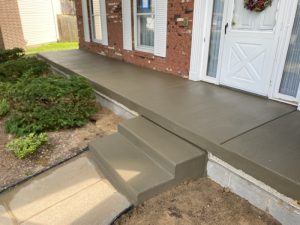Ever stared at your home’s foundation and thought, “Yikes! That’s not a good look.” Parging might just be your knight in shining armor. Imagine you’ve got a cake. The foundation is your cake’s base. Parging is like putting the final layer of frosting—perfecting the appearance while adding a layer of protection. You can get the best foundation parging in this sites.

Let’s dive into the nitty-gritty. First off, parging is a thin layer, typically a mix of cement and lime, that’s applied over the visible concrete foundation. It’s kinda like giving your foundation a facelift—it covers up cracks, holes, and those ugly blemishes that can make your home look less inviting.
Foundations, especially older ones, tend to develop a lot of character. Unfortunately, that character can translate to wear and tear over the years. If ignored, small cracks can transform into bigger headaches, letting moisture sneak in and wreak havoc. Ever had that creeping dread as you notice a damp patch in your basement? That’s where parging steps in like a superhero.
Now, you might ask, “Is this something I can do myself, or should I call in the pros?” Good question. If you’re the DIY type and enjoy a challenge, it’s not rocket science. Grab some parging mix, your trowel, and a bucket of elbow grease. A little word of caution, though: make sure the weather’s right. Parging in sweltering heat or freezing cold? Not a great idea. It’s like trying to grill in a snowstorm—just don’t.
Talking tools, you’ll need a mixing bucket, a hawk to hold the mix, and a trowel for application. Clean the surface first—make sure it’s free of dirt, grease, and old flaking material. An anecdote from a friend: he spent hours parging, only to realize he hadn’t cleaned the foundation properly. Result? It didn’t stick. Lesson learned: prep work matters.
On the topic of mix consistency, think of pancake batter. Not too runny, not too thick. Just the right blend so it spreads easily but doesn’t drip all over the place. And when applying, start from the bottom and work your way up. It’s sort of like icing a cake; you want a nice even layer. Don’t stress too much about it being perfect; like your grandma says, imperfections add character.
Heard about waterproofing? Parging also helps with that. By sealing small cracks and covering holes, it adds an extra barrier against moisture. But remember, it’s not a cure-all. If your foundation is seriously damaged, parging is just a band-aid on a broken arm. You might need more extensive repairs underneath.
Maintenance is key. Parging isn’t a one-and-done sorta deal. Over time, it can crack or wear down. It’s important to keep an eye on it and do touch-ups as needed. Kind of like checking your car’s oil. Neglect it, and it can lead to bigger problems down the road.
Cracks in the parging? Don’t panic. Small cracks can be repaired with a bit of fresh mix. Take a fact from me: A hairline crack isn’t going to bring the house down. But keep water away. Moisture is the sneaky villain in our story. If water sits on your foundation, it can mess with your parging work and sooner or later affect the underlying structure.
And here’s a quirky tip: Add a splash of color. You can actually tint your parging mix to match your home’s exterior. Why not jazz things up a bit? It’s your home, after all—should reflect your style.
So, there you have it. A straightforward guide to giving your home’s foundation a bit of TLC with parging. It’s more than just aesthetics; it’s about strengthening the base, keeping moisture out, and adding a layer of resilience. Your foundation will thank you. And your friends? They’ll be none the wiser, admiring your home’s new look without ever knowing the effort behind it.
Now, put on that DIY hat, grab your gear, and go make your foundation proud. It’s not just about fixing—it’s about taking pride in every part of your home.